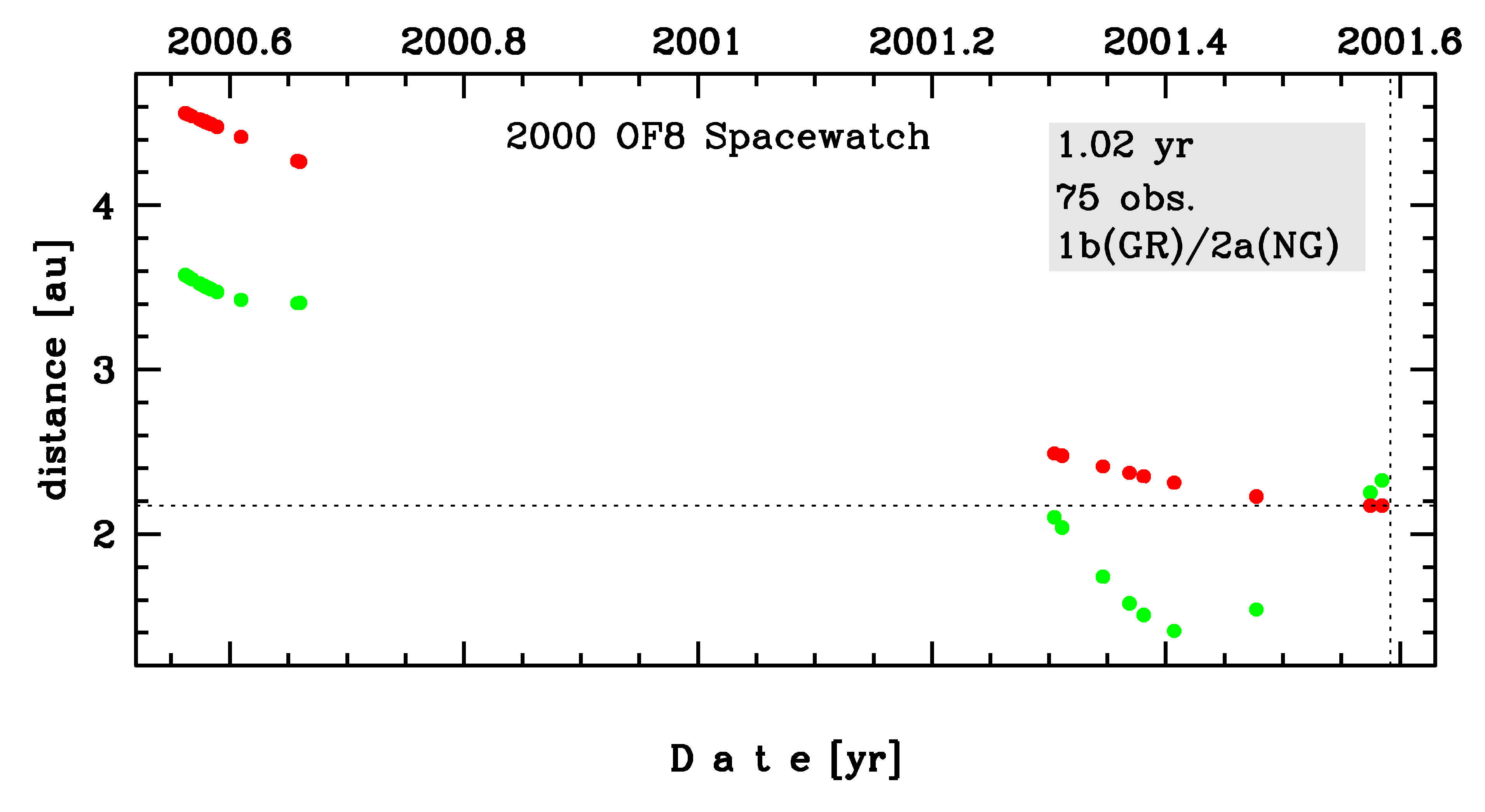C/2000 OF8 Spacewatch
more info
Comet C/2000 OF8 was discovered on 24 July 2000 with Spacewatch Research project (Steward Observatory, Kitt Peak), that is a year before its perihelion passage. It was observed until 1 August 2001.
Preffered solution given here is based on pre-perihelion data spanning over 1.02 yr in a range of heliocentric distances from 4.56 au to 2.17 au.
Comet had its closest approach to the Earth on 4 June 2001 (1.390 au), about 2 months before perihelion passage.
This is Oort spike comet.
See also Sekanina 2019 and Królikowska 2020
Preffered solution given here is based on pre-perihelion data spanning over 1.02 yr in a range of heliocentric distances from 4.56 au to 2.17 au.
Comet had its closest approach to the Earth on 4 June 2001 (1.390 au), about 2 months before perihelion passage.
This is Oort spike comet.
See also Sekanina 2019 and Królikowska 2020
| solution description | ||
|---|---|---|
| number of observations | 75 | |
| data interval | 2000 07 24 – 2001 08 01 | |
| data type | observed only before perihelion (PRE) | |
| data arc selection | entire data set (STD) | |
| range of heliocentric distances | 4.56 au – 2.23au | |
| detectability of NG effects in the comet's motion | comet lost close to perihelion or split comet | |
| type of model of motion | GR - gravitational orbit | |
| data weighting | NO | |
| number of residuals | 136 | |
| RMS [arcseconds] | 0.52 | |
| orbit quality class | 1b | |
| orbital elements (barycentric ecliptic J2000) | ||
|---|---|---|
| Epoch | 1700 11 05 | |
| perihelion date | 2001 08 04.74863688 | ± 0.00073423 |
| perihelion distance [au] | 2.17696869 | ± 0.00000464 |
| eccentricity | 0.99989140 | ± 0.00001264 |
| argument of perihelion [°] | 255.937865 | ± 0.000272 |
| ascending node [°] | 116.910175 | ± 0.000034 |
| inclination [°] | 152.46635 | ± 0.000037 |
| reciprocal semi-major axis [10-6 au-1] | 49.88 | ± 5.81 |
| file containing 5001 VCs swarm |
|---|
| 2000ofa1.bmi |

